Where to Photograph in Alaska
It’s never easy to answer. Alaska’s power lies in its diversity—each region is so distinct that spending time in one only deepens your appreciation for the others. I enjoy winter because I’ve lived through summer, and summer feels more vivid after enduring the starkness of winter. Alaska is vast, and it’s the contrast—the shifts in light, weather, terrain, and wildlife—that makes traveling across it so rewarding.
Wildlife varies dramatically from region to region. The Arctic’s tundra-dwelling species offer a completely different experience than the marine life and temperate rainforest creatures of Southeast Alaska. Both environments are extraordinary in their own right, and both pull at the lens in unique ways.
So instead of naming a single favorite, I’ll share a few places I’ve returned to often. These aren’t secret spots—they’re well known, and rightfully so.
Brooks Falls, Katmai National Park
What draws me to Brooks Falls is its rich combination of elements: the dramatic topography, the pastel aqua-blue water of Naknek lake, the mountain backdrop, and the morning light on the beaches. Add to that the incredible density of brown bears and a supporting cast of other wildlife, and it becomes a place that keeps calling me back.
Access typically involves flying to King Salmon by commercial jet, followed by a floatplane hop to Brooks Lodge, nestled along the lake’s edge. Day trips from Anchorage or Homer are becoming more popular, but those tend to miss the golden light of early morning and evening—and with it, some of the most rewarding photographic opportunities. I prefer to spend enough time to get to know individual bears and their rhythms, to watch weather roll across the lake, and to adjust to the pace of the place. Camping at Brooks Campground is convenient, but space is limited, especially during peak salmon runs when the bears gather in greatest numbers.
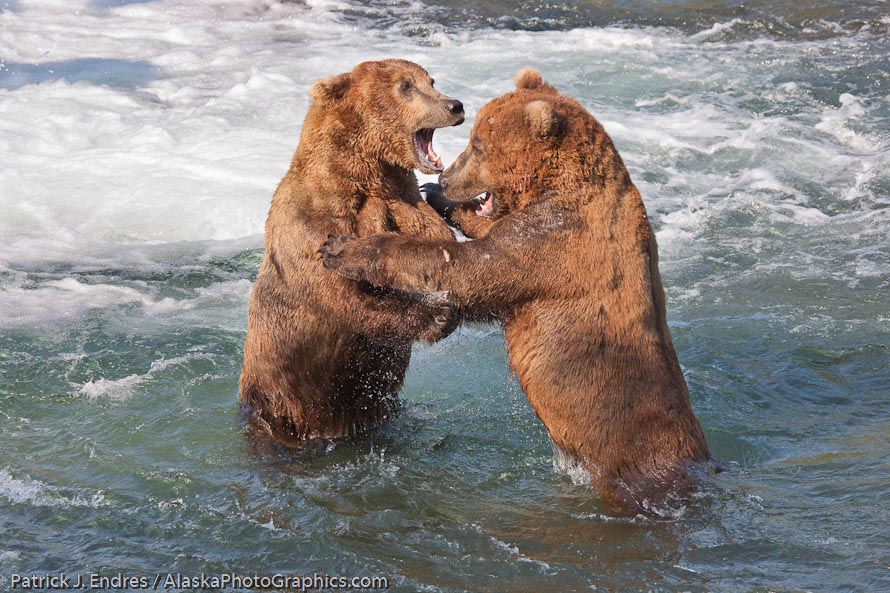
Brown bears defend fishing territory in the Brooks River, Katmai National Park, southwest Alaska.
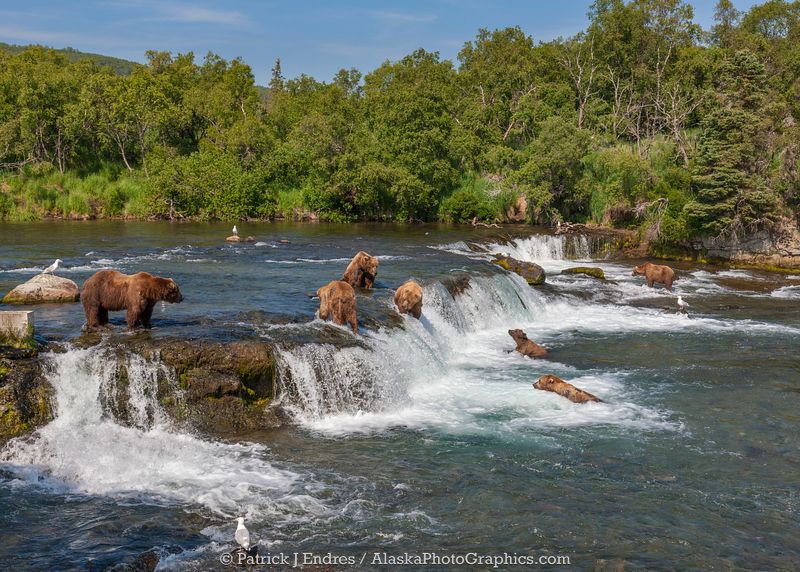
Brown bears fish for red salmon at Brooks Falls, Brooks River, Katmai National Park, southwest, Alaska.
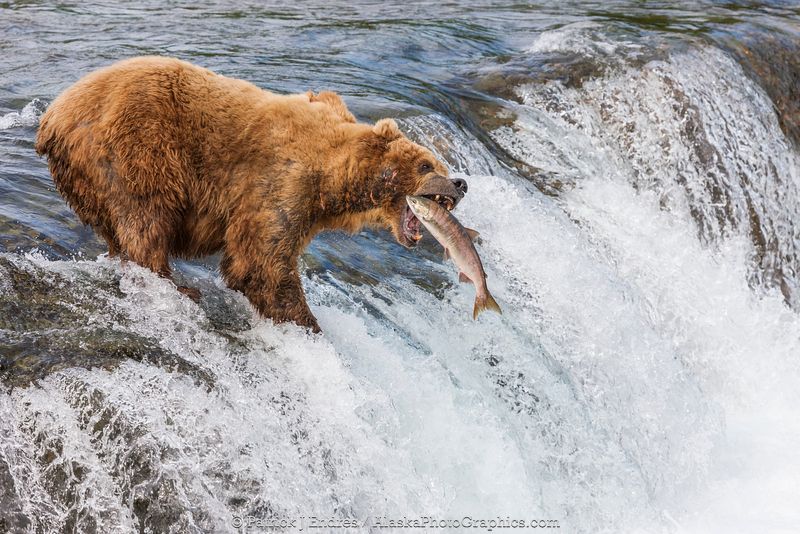
Brown bears fish for red salmon on the falls of Brooks River, Katmai National Park, southwest, Alaska.
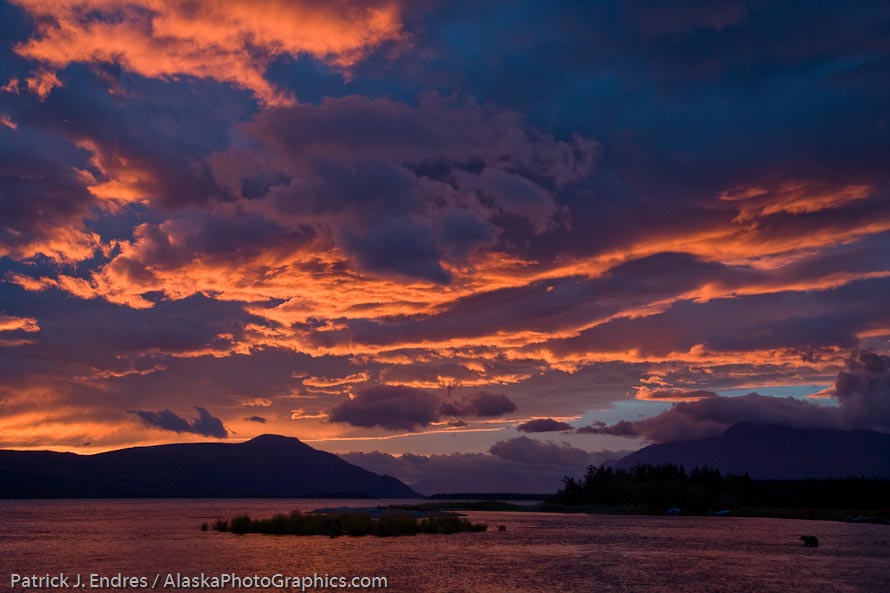
Brown bear wades in the Brooks River, sunrise over Naknek Lake, Katmai National Park, Alaska.
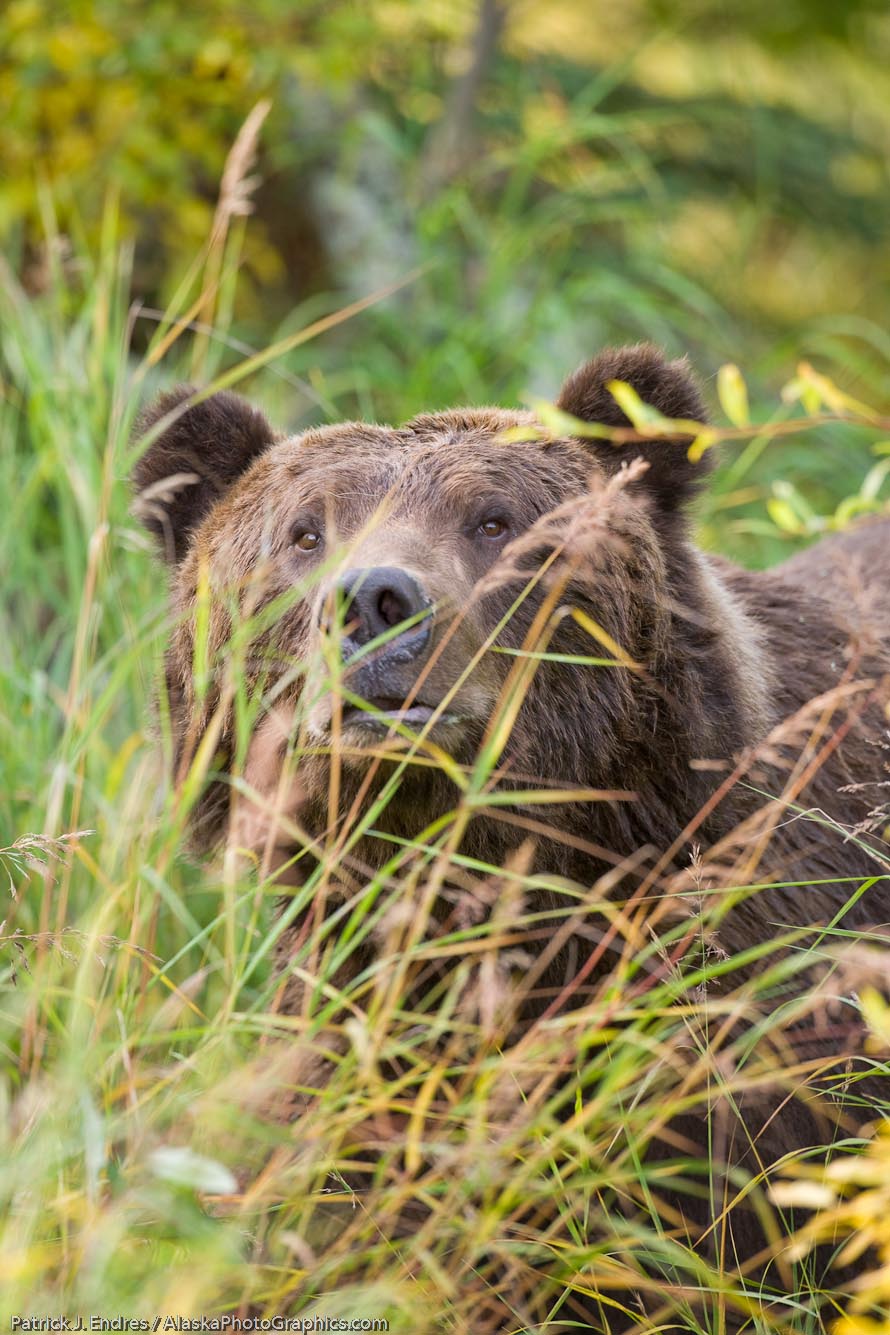
Brown bear peers through sedge grass, Katmai National Park, Alaska.
Prince William Sound
The long fjords choked with lush green hillsides are fantastic in this sheltered waterway of Prince William Sound in southcentral Alaska. Glaciers are thick and active, dumping huge icebergs into the sea. The weather can be wet but not as severe as in southeast Alaska. Its coastal landscapes and wildflower meadows are amazing. The bird life, marine wildlife, and the interface of human participation through kayaking and/or maritime industry make it intriguing. It’s growing in popularity and the number of visitors, mainly due to the road access available to public vehicles through the tunnel from Portage to Whittier. The sound can also be accessed from Valdez or Cordova on the northern and eastern shores. The Spring birding festival, held in May in Cordova, is a fascinating and, at times, mind-blowing experience. Especially if you time your visit to see the hundreds of thousands of shorebirds that migrate through.
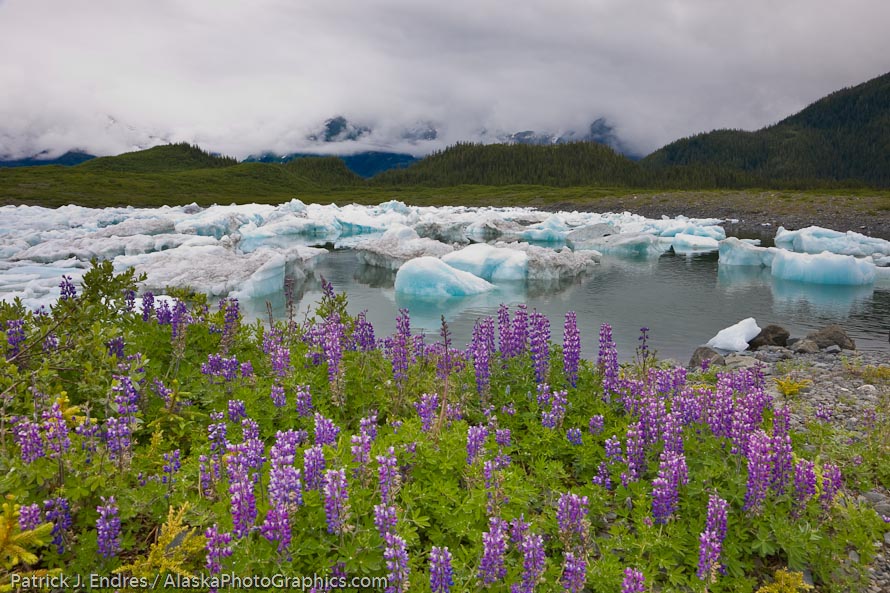
Columbia glacier icebergs, Lupine wildflowers, northern Prince William Sound, Southcentral, Alaska.
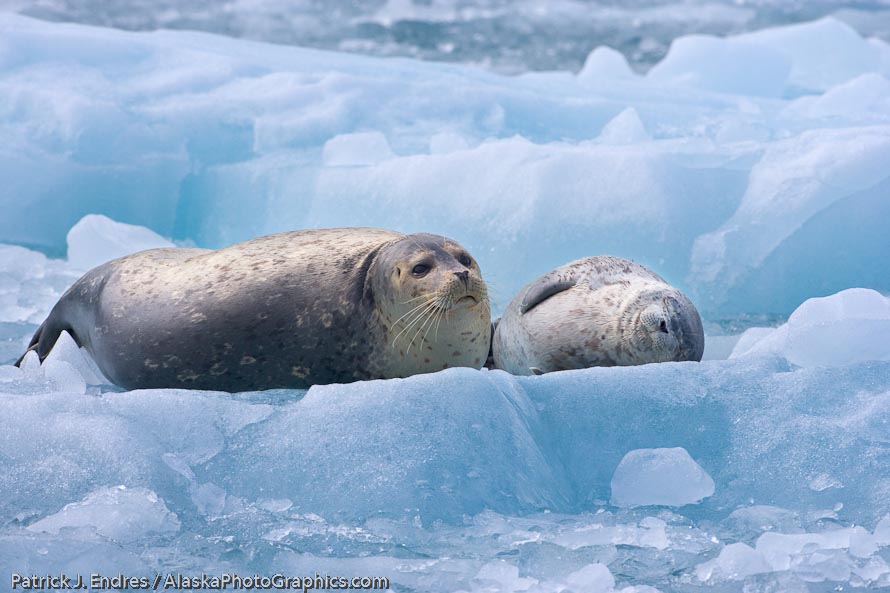
Harbor seals on glacier icebergs, Nassau fjord, Chenega glacier, Western Prince William Sound, Alaska
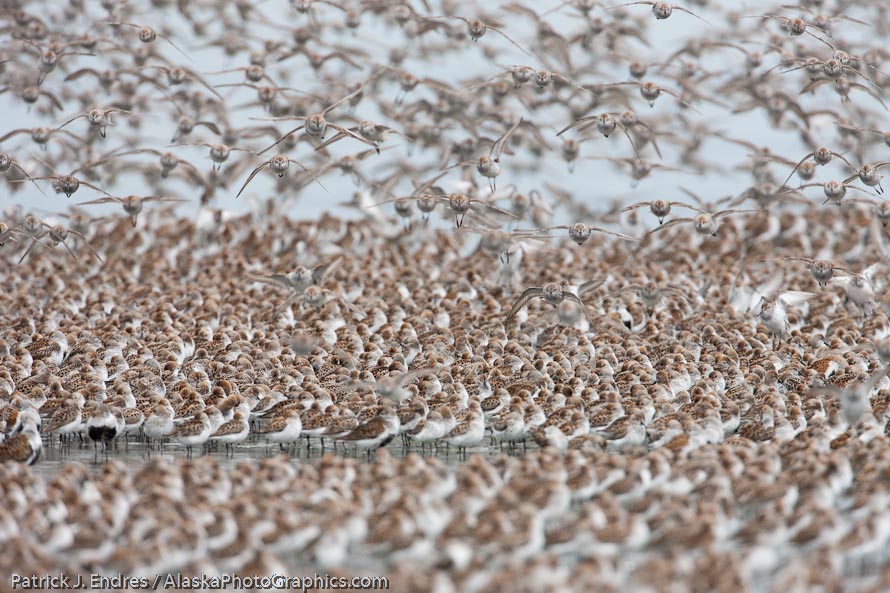
Flocks of shorebirds, dominated by Western sandpipers, flock to the shores of Hartney Bay, Copper River Delta, and Prince William Sound, Alaska, to refuel during their migration to summer.
The Brooks Range
The Brooks Range is a massive region encompassing the northernmost continental divide that separates Alaska’s Interior from the expansive Arctic North Slope. The remote, sparsely populated area is extreme, austere, beautiful, and rugged–home of endless summer light and famous mosquitoes! Access can be made on foot from the Dalton Highway, or you can fly into several areas for extended backpacking, hiking or river travel. To get to the more remote regions of the Brooks Range, including the Gates of the Arctic National Park and the Arctic Refuge, I have used the reliable air taxi service, Coyote Air Service, based in Coldfoot. The pilots, Dirk and his wife, Danielle, know the area exceptionally well: www.flycoyote.com
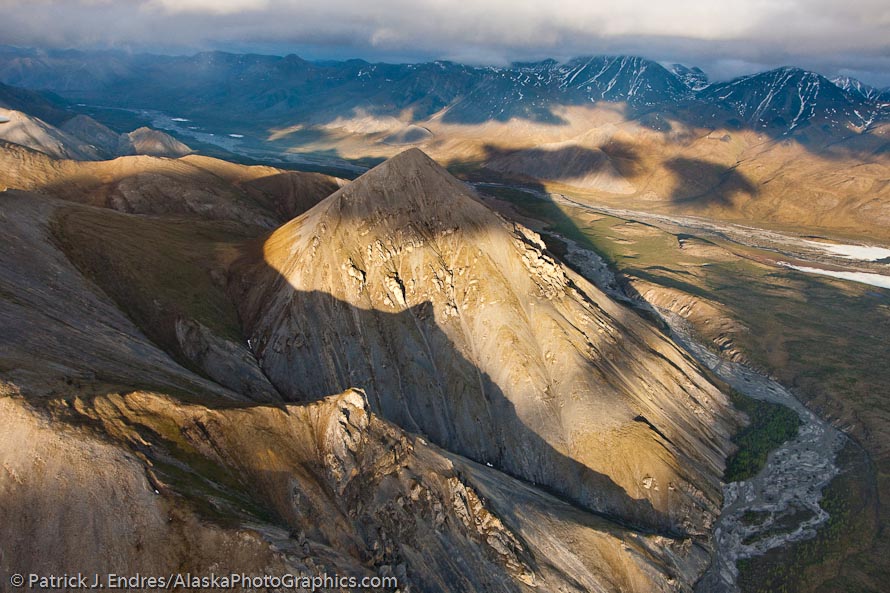
Aerial of the Davidson mountains of the Brooks Range, Arctic National Wildlife Refuge, Alaska.

Winter landscape after fresh snowfall on the foothills of the Brooks mountain range, Arctic, Alaska.
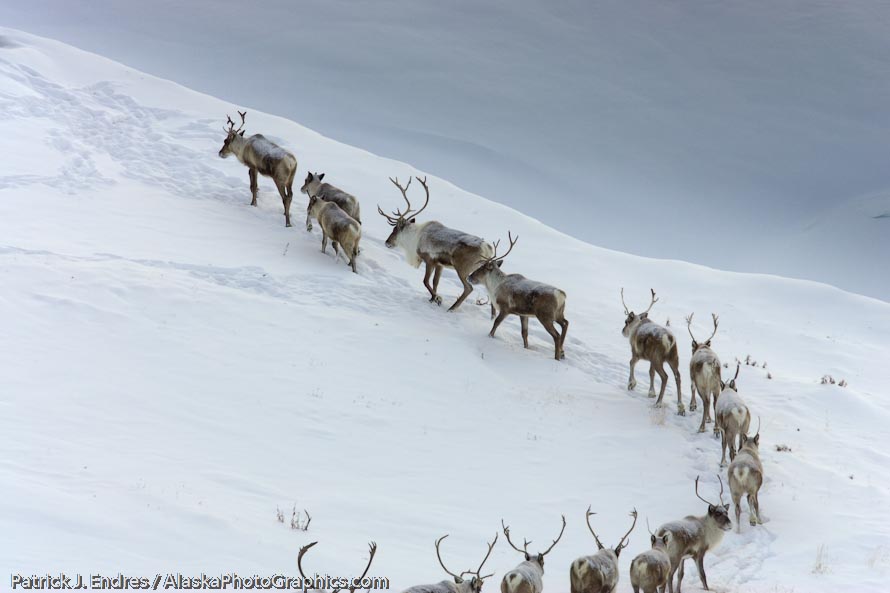
Caribou on the Arctic tundra north of the Brooks Range, Arctic, Alaska
Denali National Park
I have spent decades photographing in Denali National Park. It is one of Alaska’s most widely visited destinations for a reason—dramatically scenic and rich with wildlife, including moose, grizzly bears, Dall sheep, wolves, caribou and more. The Denali Park Road moves through four mountain passes, which parallel rivers with grand vistas—all in just 90 miles! No other road system in Alaska delivers such scenic and wildlife diversity in a short distance. A bus shuttle system provides access into the park. Overnight back country camping requires special permits easily obtained at the Visitor’s Center. The landscapes and wildlife can be photographed on foot hiking or from a park shuttle bus, the latter more restrictive.
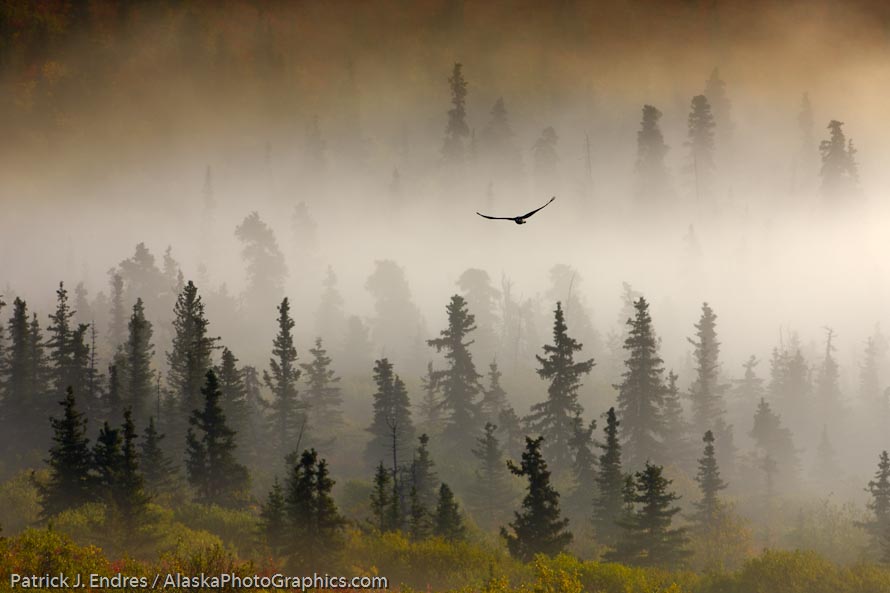
Raven flys through spruce trees in the morning fog, Denali National Park, interior, Alaska.
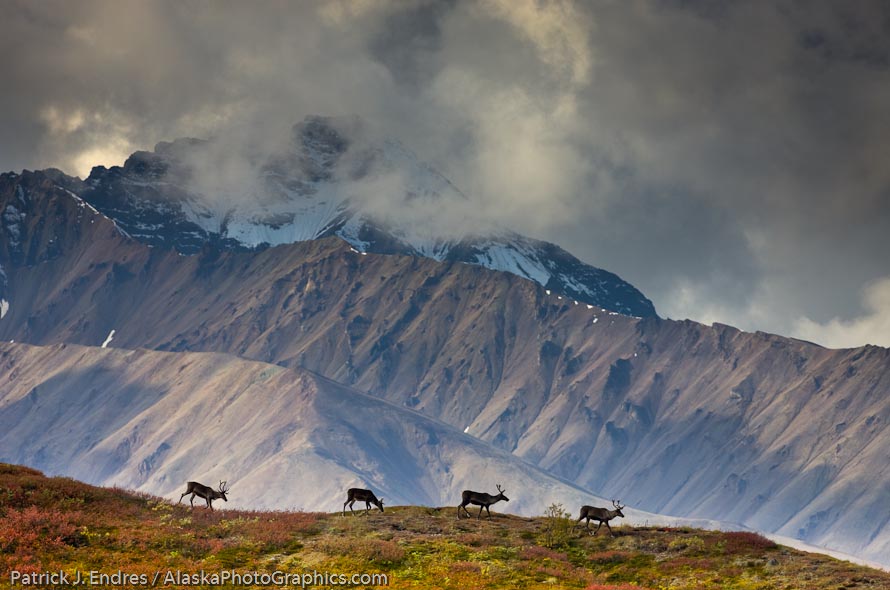
Bull caribou travel across a mountain ridge in the Alaska range mountains, Denali National Park, interior, Alaska.

Partially obscured Denali (North America’s highest mountain – 20,320ft), Wonder Lake, Denali National Park, interior, Alaska.
